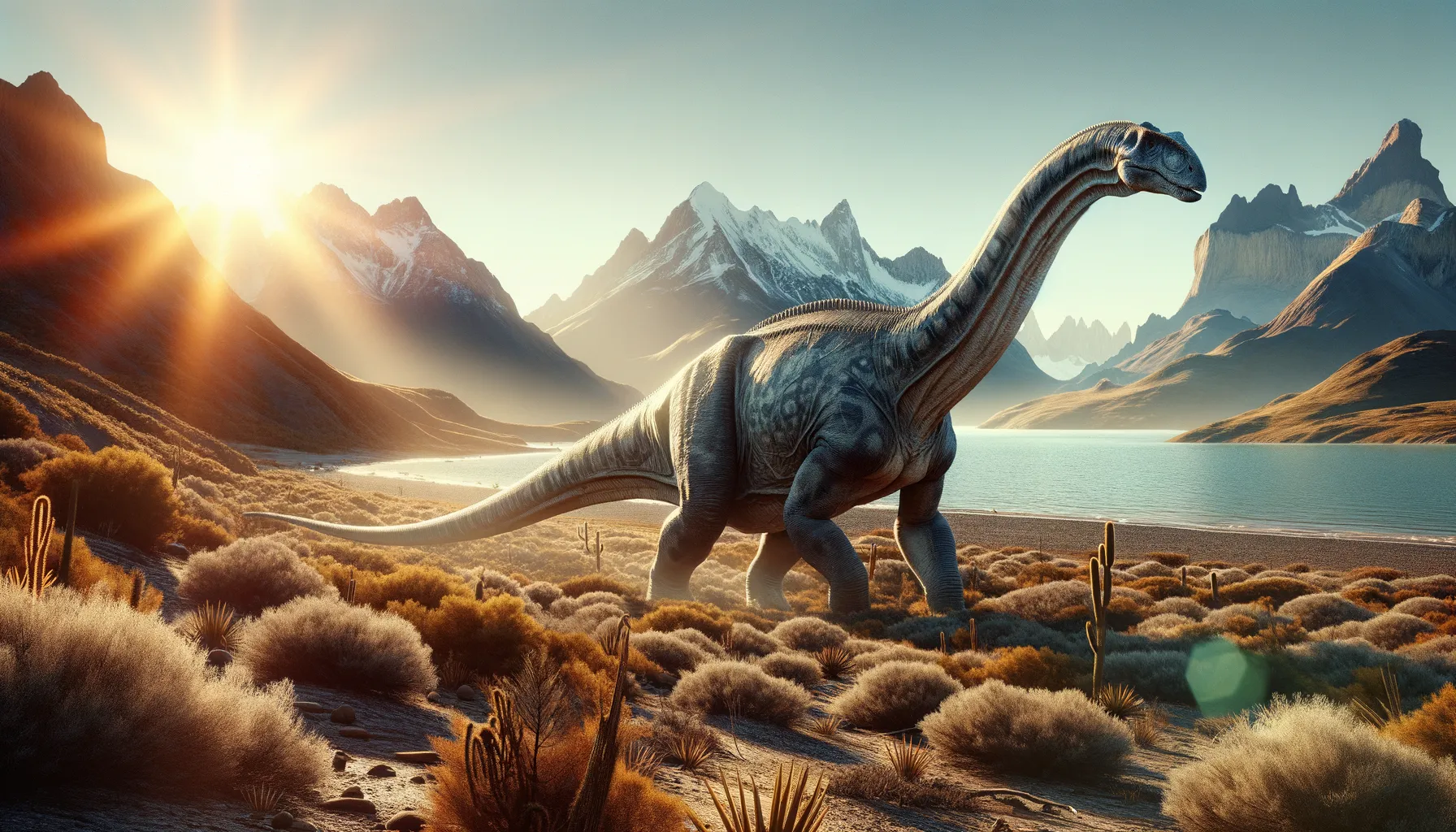
Drusilasaura
Giant of the Late Cretaceous world.
Period
Cretaceous
Length
Estimated to be about 65 feet long.
Height
Around 15 feet tall at the shoulder.
Weight
Possibly over 20 tons.
Drusilasaura was a massive herbivorous dinosaur that lived during the Late Cretaceous period. Known for its long neck and massive body, it is a member of the titanosaur group, which includes some of the largest land animals to have ever existed. The fossils were found in Argentina, offering insights into the diverse ecosystem of that era.
Diet
Drusilasaura was a herbivore, feeding primarily on plant material. Its long neck allowed it to reach leaves and branches that were otherwise inaccessible to other species. It likely consumed large quantities of vegetation to support its massive size.
Hunting
Being a herbivore, Drusilasaura did not hunt other animals. Its survival strategy likely involved finding and consuming vast amounts of plant material, which was abundant in its habitat. This passive lifestyle would have been essential for such a large animal.
Environmental challenges
Drusilasaura faced challenges such as seasonal changes that affected plant availability. It would have needed to migrate to follow the growth patterns of vegetation. Moreover, staying safe from predators required living in groups for better protection. The landscape itself could be harsh, with varied terrain requiring adaptability.
Speed
Relatively slow due to its large size.
Lifespan
Estimated to be several decades.
First discovery
Discovered in Argentina in 2007.
Fun Facts
- Drusilasaura was a massive herbivore that roamed the Earth during the Late Cretaceous period.
- It was discovered in Patagonia, Argentina, a region famous for its rich dinosaur fossils.
- Drusilasaura is believed to have been part of the titanosaur family, known for their large size and long necks.
- The dinosaur's name honors Drusila, a young girl whose interest in paleontology helped inspire the excavation.
- Drusilasaura's fossils provide valuable insights into the ancient ecosystems of South America.
- This dinosaur likely lived in herds, offering protection from predators through sheer numbers.
- Despite its size, Drusilasaura relied on vegetation, likely consistent with a diet of leaves and small plants.
Growth and Development
Drusilasaura likely hatched from eggs, as is typical for dinosaurs. Young individuals would have grown rapidly, needing to reach a size that offered protection from predators. Over its lifespan, it would continue to grow slowly, adding weight and strength.
Habitat
The habitat of Drusilasaura was likely lush and verdant, with plenty of plant life to sustain its dietary needs. It probably favored floodplains and forested areas where food was abundant. Proximity to water sources would have been vital for hydration and nourishment.
Interaction with other species
Drusilasaura might have shared its environment with various other herbivorous and carnivorous species. It might have traveled in herds, and its presence could have deterred smaller predators due to its size. Competition for food with other herbivores was likely, creating occasional conflicts.
Natural lifespan
Its natural lifespan was likely comparable to modern large mammals.
Reproduction
Reproduction likely involved laying eggs, as with most dinosaurs. Adults might have chosen safe, concealed locations for nests to protect their offspring. Some parental care could have been involved, potentially guarding eggs or hatchlings until they were more mobile.
Social behaviour
Drusilasaura may have been social, traveling in groups to enhance safety against predators. Such social structures would foster communication among individuals, especially during migration or when locating food. However, little is known about specific social behaviors.
Fossil locations
Fossils of Drusilasaura have been primarily found in Argentina, within sedimentary rock formations. These locations provide valuable insights into the environment of the Late Cretaceous period. Further discoveries could help clarify its distribution and lifestyle.
